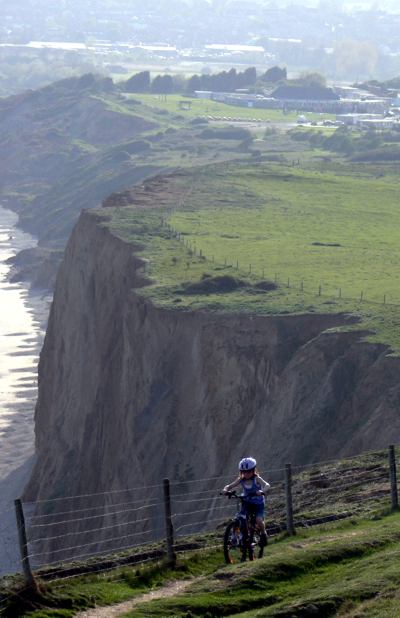Coastal right of access – what’s all this about ‘spreading room’?
- Complaining about the Mainland - 17th August, 2024
- New island designation – is it just greenwash? - 26th April, 2024
- Police and Crime Commissioners – a solution or a problem? - 21st April, 2024
It’s been a couple of months now since Natural England announced the proposals to create a new right of access to the coast of England, similar to that which already exists in Scotland.

Secretary of State for the Environment, David Miliband has waded in and made it very clear indeed what he wants to happen.
England’s coastline is a national treasure. It should be the birth-right of every citizen. Many parts of the coast are already accessible but some are not. We want to create an access corridor so that people can walk the entire length of the English coast. (David Miliband: Independent 8.4.07)
This is one proposal that has caused a great deal of discussion on the Isle of Wight. When the original access rights were proposed, there was plenty of huffing and puffing but in the end, the Island was little affected, as the vast majority of the affected land was downland, and already open to the public anyway. This new proposal will be quite different. With more coast per acre than any other English county, significant parts presently inaccessible for a variety of reasons, and much pressure from visitors; the Island will be a good place to observe just how the new proposals really will work – or not. The illustration above shows a little girl cycling on the coastal footpath above Sandown Bay this week. OK, she shouldn’t really have been cycling but you can’t help but admire her fortitude – to get to that location she has cycled along the cliff right up from the distant town you can see below. The photograph illustrates very well a key concept in the Natural England proposals called ‘spreading room’. The coastal path she’s cycled up so far is mostly nice and wide, as the photograph shows. This is because it is owned by the National Trust who have historically allowed access over the land. The field in the middle distance is typical – the crumbling cliff at the edge is protected by a fence, and a strip of perhaps 100m of land is behind it over which the path runs. From this distance we can easily see that there is no single over-worn path which cuts through the land, it is all green and pleasant. This means that even in the winter this bit of the path does not get too muddy, and also that whenever a bit of the cliff falls in and the fence is realigned – a very regular event – nobody is particularly inconvenienced. Compare this with a rather more common situation which the young cyclist herself would have had to deal with a little earlier in her journey and out of our picture. A typical coastal footpath on land to which the public are not allowed any other access is pressed hard up against the cliff edge, with a fence either side. The path itself becomes worn and muddy, and when erosion inevitably cuts into the path there are big problems for path users and landowners alike, as the path becomes harder and harder to use, and path users are obliged to make unofficial diversions inland. At present there is no practical legal way in which the Highway Authority (assuming they are looking after the footpath) can repair the path and make a new route inland if the existing one becomes unusable.
 This image shows an extreme example from the Cliffs of Moher in Ireland. This image shows the problem all too well – high pressure on the narrow coastal strip has caused such damage to the path that it has all but destroyed. If the path could have been moved inland, or the pressure spread out and controlled, the visitors could still keep access without damaging the land too much. It is the establishment of these areas of ‘spreading room’ that the new Natural England proposals seek. But there is a problem. Land is not free for anyone to take – all the areas which might become ‘spreading room’ currently belong to someone, and most if not all of those someones will not be willing to give up the land for nothing. Natural England are obviously aware of this, and their response is a forthright one:
This image shows an extreme example from the Cliffs of Moher in Ireland. This image shows the problem all too well – high pressure on the narrow coastal strip has caused such damage to the path that it has all but destroyed. If the path could have been moved inland, or the pressure spread out and controlled, the visitors could still keep access without damaging the land too much. It is the establishment of these areas of ‘spreading room’ that the new Natural England proposals seek. But there is a problem. Land is not free for anyone to take – all the areas which might become ‘spreading room’ currently belong to someone, and most if not all of those someones will not be willing to give up the land for nothing. Natural England are obviously aware of this, and their response is a forthright one:
Rather than compensation, Natural England is proposing extending the use of grant aid to land managers to produce environmental improvements around the coast, for example by rolling back intensive agriculture from the cliff top… There should be a working presumption against paying compensation for public access along the undeveloped coast.
Unless Natural England have some very persuasive surprises up their sleeves the debates which will follow are going to be lively ones.


